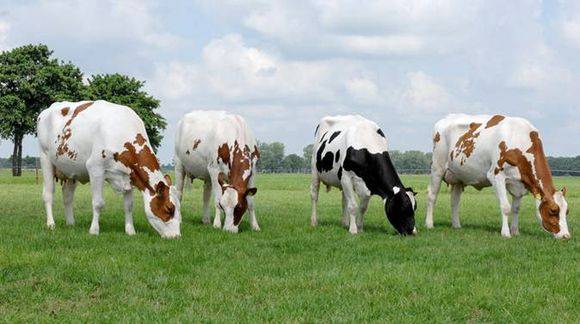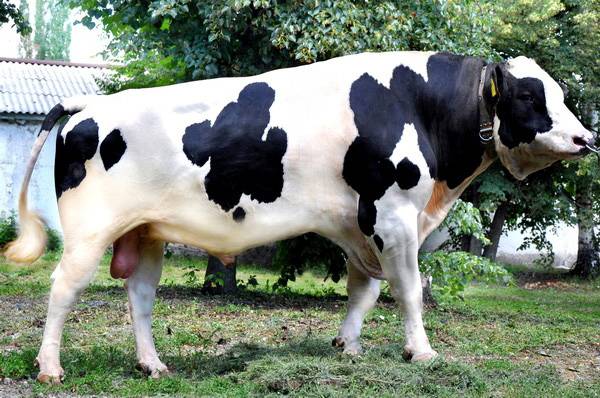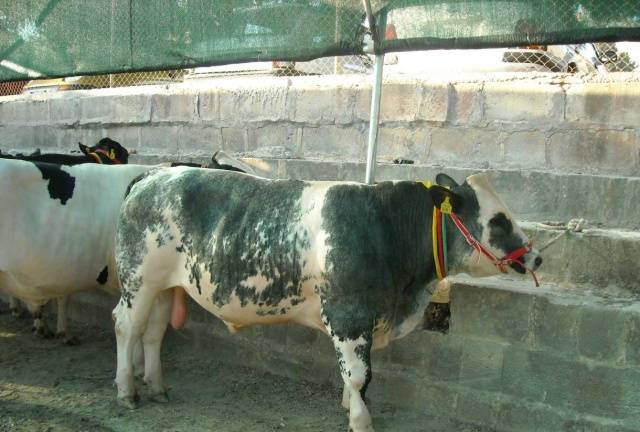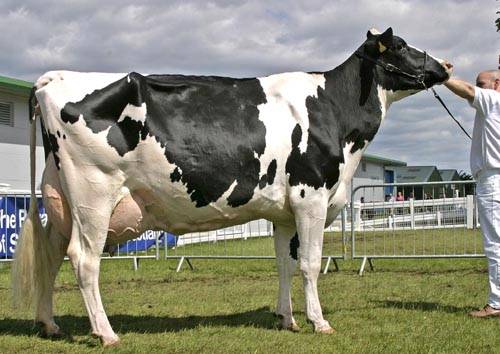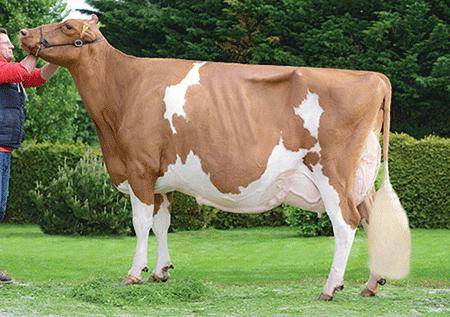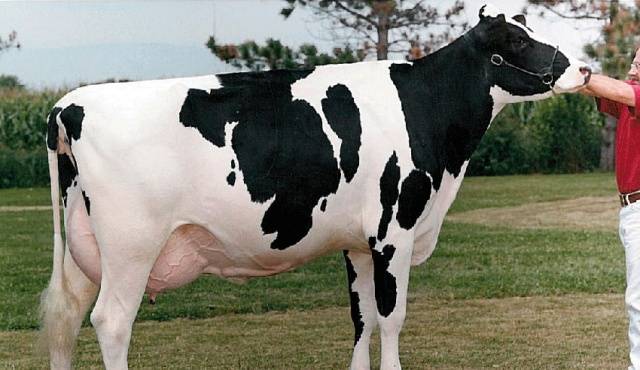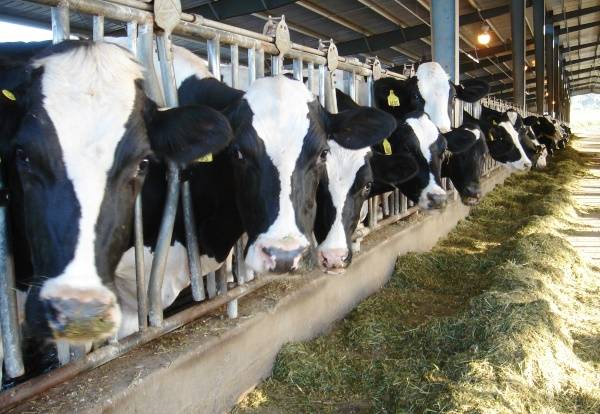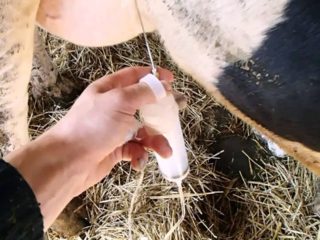Content
The history of the most widespread and most milked cow breeds in the world, oddly enough, is well documented, although it began before our era. This is a Holstein cow, which arose from the mixing of the original Frisian cattle with "migrants" from modern Germany.
History of the Holstein breed
In the 1st century BC, a group of immigrants from the German land of Hessen came to the lands of the then Frisia, located in the modern territories of the provinces of North Holland, Groningen and Friesland, bringing cows with them. Cattle Frisian tribes in those days was of light color. The settlers brought in black cows. The mixing of these two breeds, most likely, gave rise to the breeding of Holstein-Friesian cattle - the ancestor of the modern Holstein cow breed.
The inhabitants of Frisia did not like to fight, preferring the work of shepherds. To avoid conscription, they paid taxes to the Roman Empire with cow skins and horns. Most likely, the large size of Holstein cows originated in those days, since large skins were more profitable for the manufacture of armor and shields. The breed was bred practically clean, apart from small accidental admixtures of other livestock.
In the 13th century, a large lake was formed as a result of flooding, which divided Frisia into two parts. A single livestock population was also split and two breeds began to form: Frisian and Holstein. As a result of historical processes, both populations have mixed again. Today Holstein and Friesians are united under the general name "Holstein-Friesian cattle breed". But there is some difference. The friezes are smaller. Holstein weight 800 kg, friezes 650 kg.
The land of the Netherlands, drained from swamps, is still ideal for growing on grass for livestock feed. She was famous for the same in the Middle Ages. In the XIII-XVI centuries, the former Frisia produced a huge amount of cheese and butter. Raw materials for the manufacture of products were obtained from Frisian cattle.
The goal of the breeders of that time was to get as much milk and meat as possible from the same animal. Historical records mention cows weighing 1300 - 1500 kg. Inbreeding was not practiced in those days, often equating animals with humans. Suffice it to recall the medieval animal trials. And intimate relationships were forbidden by the Bible. There were some differences in size among the Friesian cattle, but not because of inbreeding, but because of the different composition of the soil. The malnutrition prevented cows from certain Friesian cattle populations from growing to full size.
Since the Middle Ages, Holstein cattle have been exported to all European countries, participating in the improvement of local breeds of cows. In fact, about all today's dairy breeds of cows, we can safely say that they were Holsteinized at one time or another. Only the populations of the islands of Jersey and Guernsey, whose laws prohibited the crossing of local cattle with imported ones, did not add Holsteins. Perhaps this saved the Jersey breed of cows, whose milk is considered the best in quality.
In the middle of the 19th century, Holstein cattle were imported into the United States, where its modern history began from that moment.
In the Soviet Union, Holstein cattle served as the basis for breeding black-and-white breed.
Description of the modern Holstein cow breed
Although historically a Holstein breed of meat and dairy direction, today the cow of this breed has a pronounced dairy exterior. While remaining a supplier of meat.But even with Holstein bulls, the meat yield will be low compared to beef cattle breeds.
However, the same can be said about bulls of any breed.
The growth of an adult Holstein-Friesian cow is 140 - 145 cm. Holstein bulls are up to 160. Some specimens can grow up to 180 cm.
The color of Holstein cattle can be black and piebald, red piebald and bluish piebald. The latter is a very rare occurrence.
The blue color of dark spots is caused by a mixture of black and white hairs. A Holstein cow with such gray hair looks bluish from a distance. There is even the term "blue roan" in English terminology. In the photo there is a young Holstein goby of such a bluish-piebald suit.
In the Holstein breed, the black and piebald color is most common. Black-piebald cows are distinguished by higher milk yield than their red-piebald cows.
The red color is caused by a recessive gene that can be hidden under the black color. Previously, red-piebald Holstein cows were culled. Today they have been singled out as a separate breed. Red-piebald Holstein cattle have lower milk yield, but higher milk fat content.
Exterior:
- the head is neat, light;
- the body is long;
- the chest is wide and deep;
- back is long
- the sacrum is wide;
- straight croup;
- legs are short, well set;
- the udder is bowl-shaped, voluminous, with well-developed milk veins.
The amount of milk, how much milk a cow gives, can be determined by the shape of the udder and the development of milk veins. Udders that are too large and irregular in shape are often low dairy. The milk yield from a cow with such an udder is low.
A high-quality udder has uniformly developed, bowl-shaped lobes. The nipples are small. Rough nipples are undesirable. The back wall of the udder protrudes slightly between the hind legs, the bottom of the udder is parallel to the ground and reaches the hocks. The front wall is pushed far forward and smoothly passes into the line of the abdomen.
Productive characteristics of Holstein cows
The productivity of the Friesian breed varies greatly from country to country. In the States, Holstein cows were selected for milk yield, without paying attention to the content of fat and protein in milk. For this reason, American Holsteins have a very high milk yield with a relatively low fat and protein content.
If the diet is nutrient deficient, the fat content of milk can drop below 1%, even with sufficient feed.
Although the average milk yield in the United States is 10.5 thousand kg of milk per year, this is offset by the low fat content and low percentage of protein in milk. In addition, this milk yield is achieved through the use of hormones that stimulate milk flow. Typical Russian-European indicators are in the range of 7.5 - 8 thousand liters of milk per year. At Russian breeding plants, black-piebald Holstein yields 7.3 thousand liters of milk with a fat content of 3.8%, red-piebald ones - 4.1 thousand liters with a fat content of 3.96%.
Now the concept of dual-use cattle is already losing its positions, but so far Holstein cows have good productivity not only in milk, but also in meat. The lethal yield per carcass is 50 - 55%.
A calf at birth weighs 38 - 50 kg. With good maintenance and feeding, calves gain 350 - 380 kg by 15 months. Further, the bulls are handed over for meat, since the weight gain decreases and the maintenance of calves becomes unprofitable.
Reviews of private owners of Holstein cows
Conclusion
Holstein cows are more suitable for industrial milk production. On farms, it is possible to control the quality of feed and their nutritional value. A private trader often does not have such an opportunity. Holsteins require a lot of space and large feed reserves due to their large size. Most likely, it is for this reason that private traders do not risk having Holstein-Friesian cattle, although this particular breed predominates on farms.
